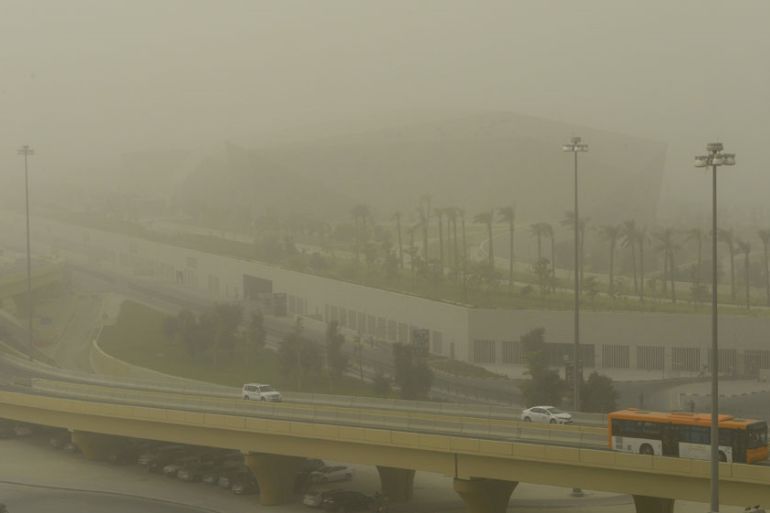More dust expected in eastern Mediterranean
More dust is expected to fill the skies around the region as a deep area of low pressure develops over North Africa.

A faceful of snow is an occupational hazard for any enthusiastic skier; a mouthful of dust is another matter. That, though, is what was reported in the mountain resorts of the Caucuses earlier this week, as a weather system swept a mass of dust out of the Saharan desert and deposited it on the snow.
At lower levels too, there were reports of huge red dust deposits, and the sun was reduced to a faint orange blob in parts of Greece, Turkey and Cyprus.
Keep reading
list of 4 itemsChina evacuates over 100,000 as heavy rain continues to lash south
Asia bears biggest climate-change brunt amid extreme weather: WMO
Photos: Highest-level rainstorm warning issued in south China’s Guangdong
Now another low pressure system is threatening to do the same thing, with dust likely to be sucked up into the atmosphere and deposited in both Cyprus and Turkey.
Saharan dust can be carried far and wide when atmospheric conditions are favourable. The region is the world’s major source of mineral dust. Dust from The Saharan Air Layer, as it is known, can be transported across the Atlantic, into the Caribbean and Florida.
Saharan dust in the upper atmosphere can play a major part in inhibiting hurricane formation. The 2017 season, was notable for some of the most powerful hurricanes in recent years, including the Category 5s Irma and Maria, and the Category 4s Harvey and Jose. For much of the season, the Saharan Dust layer was noticeable by its absence.
Problems resulting from this developing low pressure system are likely to be felt much closer to the ground. On Thursday, Egypt, Israel, Lebanon and Syria are at risk of dust storms. That risk will spread across the Arabian Peninsula into Friday and Saturday.
Apart from the obvious issues of low visibility and poor air quality, there is a chance that flights across the region will be affected, as engines can be damaged should they intake large amounts of abrasive dust.